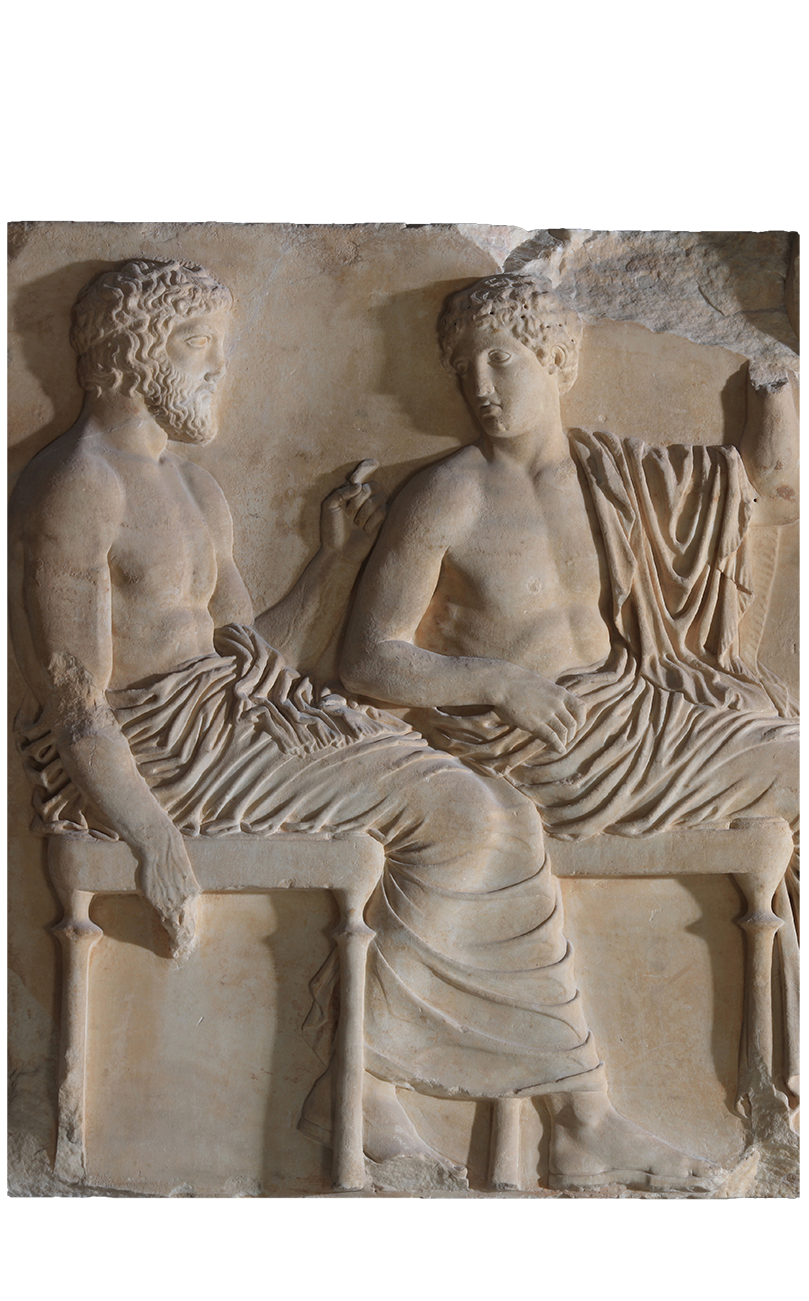THEMATIC SECTION
The frieze
The frieze in ancient temples was a continuous zone of panels, usually adorned with carved reliefs, which in Ionic-style buildings replaced the metopes above the columns of the outer colonnade.
The Ionic frieze incorporated into the Doric Parthenon wrapped around the outer, upper walls of the cella – the temple proper. It consisted of 115 blocks that reached a total length of 160 metres and were structural elements of the building. Shown in the reliefs carved on their exterior faces were 378 human and divine figures, as well as more than 220 animals, mostly horses.
The frieze was sculpted between 443 and 438 BC. Its design was the work of the sculptor Pheidias, but its carving was executed by some of his most famous pupils. The frieze’s subject is believed to be the procession of the Greater Panathenaia, the most important festival held in honour of the city’s divine patroness Athena.
The sculpted procession began at the southwest corner of the temple, where it separated into two groups – one moving up the building’s west end and across the long north side; the other, along the south side. They met again in the centre of the east end, the temple’s most formal, main façade, where the new peplos, the garment to be presented to Athena Polias’ statue, was depicted.
Explore the Parthenon frieze

ALL SECTION EXHIBITS
The use of your data is described in the privacy settings









